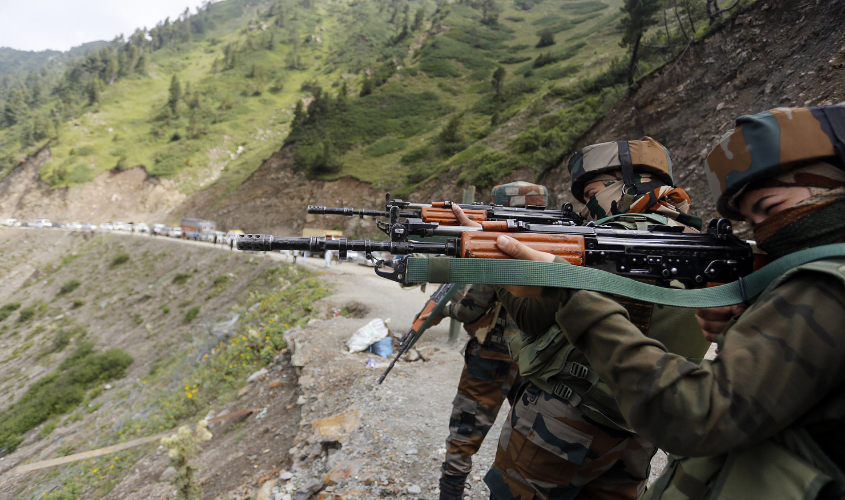
SOURCE: Lt Gen Satish Dua (retd) / SUNDAY GUARDIAN LIVE
The surgical strike was launched four years ago. Actually it was launched on 28 September 2016, completed and announced on the 29th morning. In fact, it began on 18 September when terrorists attacked the Army Camp at Uri and we lost 18 soldiers. It had perhaps been building up even earlier, when terrorists attacked the airbase at Pathankot in January and caused damage to life and property.
Then in February, they occupied a building on the outskirts of Srinagar, took 66 hostages in the biggest hostage situation in India. And then in a repeat attack, the neighbouring building, also a six-storey building, was attacked by suicide terrorists a few months later.
These and many more such high profile terrorist attacks were launched from across the LOC, employing the low cost option of sending in terrorists; they also used the deniability card. We, on the other hand, could never use such devices. Hence, the Indian Army, even the whole Indian state, was becoming more defensive. It is well known that the one who has initiative will be able to inflict larger damage. Especially when they launch terrorists, Pakistan does not even risk the life of their soldiers. It is a low investment-high gain option.
So, Uri was the last straw. It was a dark Sunday for me as the Corps Commander to lose 18 young lives on my watch, to go to the site and see the fires burning, to salute their mortal remains—eighteen of them—next morning. But it was also a day of resolution. The Defence Minister and Army Chief were in my office on the very same day, the day when there was outrage in the country, the nation was incensed, the leadership was agitated, and on a day when all soldiers wanted revenge, they wanted to avenge the death of the comrades. The leadership agreed to a bold plan of causing similar hurt to the other side; of taking the battle into his territory; of boldly striking across at the terrorists’ camps across the Line of Control. Something that had never been done before at this magnitude and depth by our country. Political and diplomatic instruments of power were synergised, in the on-going UN General Assembly session and outside.
Ten days later, an operation was launched at multiple points and the desired results were achieved. Next morning the Army DGMO called up his Pakistani counterpart and told them we did it. We did this because you did Uri. We don’t want to expand it further; the ball is in your court now. All that denial and bluster came because Pakistan did not know how to react. And India had drawn new red lines. It set the stage for Balakot airstrikes when Pulwama terror attack took place.
Far removed geographically, let us also not forget the manner in which we stood resolutely against China to protect the interests of Bhutan at the India China Bhutan tri-junction at the Dolam plateau. These are the major operations where a new security paradigm seems to have been silently announced, whereby India has started taking an overt bold stand where required.
This year the Indo-China standoff took place at several points in Ladakh and some of them became more belligerent than others. While seemingly engaged in negotiations, Galwan became a turning point, where faced with unimaginable Chinese devices or techniques, Indian soldiers also used every trick out of the book, but showed great mettle and bravery to inflict heavy damage on the enemy. In so doing, we lost 20 bravehearts, led bravely by their commanding officer, Colonel Santosh Babu. A couple of months later, our soldiers occupied a few mountain peaks south of Pangong Tso. It has pre-empted the Chinese strengths in the tactical battle space as well as on the negotiating table. This has frustrated the Chinese side that never imagined that India would take such proactive steps.
This is the new Indian paradigm. This is a changed India—newer and stronger. India has finally shed the soft-nation tag. While I have recounted only the military actions, several strong steps have been taken in the political, diplomatic and economic fields for the good of the country. To list a current relevant combination, the political actions of banning Chinese apps, economic steps of curbs on FDI and participation in tenders for business, and diplomatic confabulations with other countries to isolate China on the Ladakh border standoff, inter alia, are a good example of synergising instruments of power towards a national endeavour. We also see that when military creates some tactical strength it generates invaluable bargaining levers in diplomacy and a comfortable position on the negotiating table.
This all began with the surgical strike four years ago. I can still feel the pain. But it is also satisfying to note that the bravery of our soldiers not only exacted an appropriate revenge by launching a surgical strike on the terrorists’ camps across the LoC, but also paved the way for bold ripostes when required.
I pay homage to those who made the supreme sacrifice in Uri and a General Salute to the bravehearts, who went across and launched the surgical strike.
Jai Hind!






